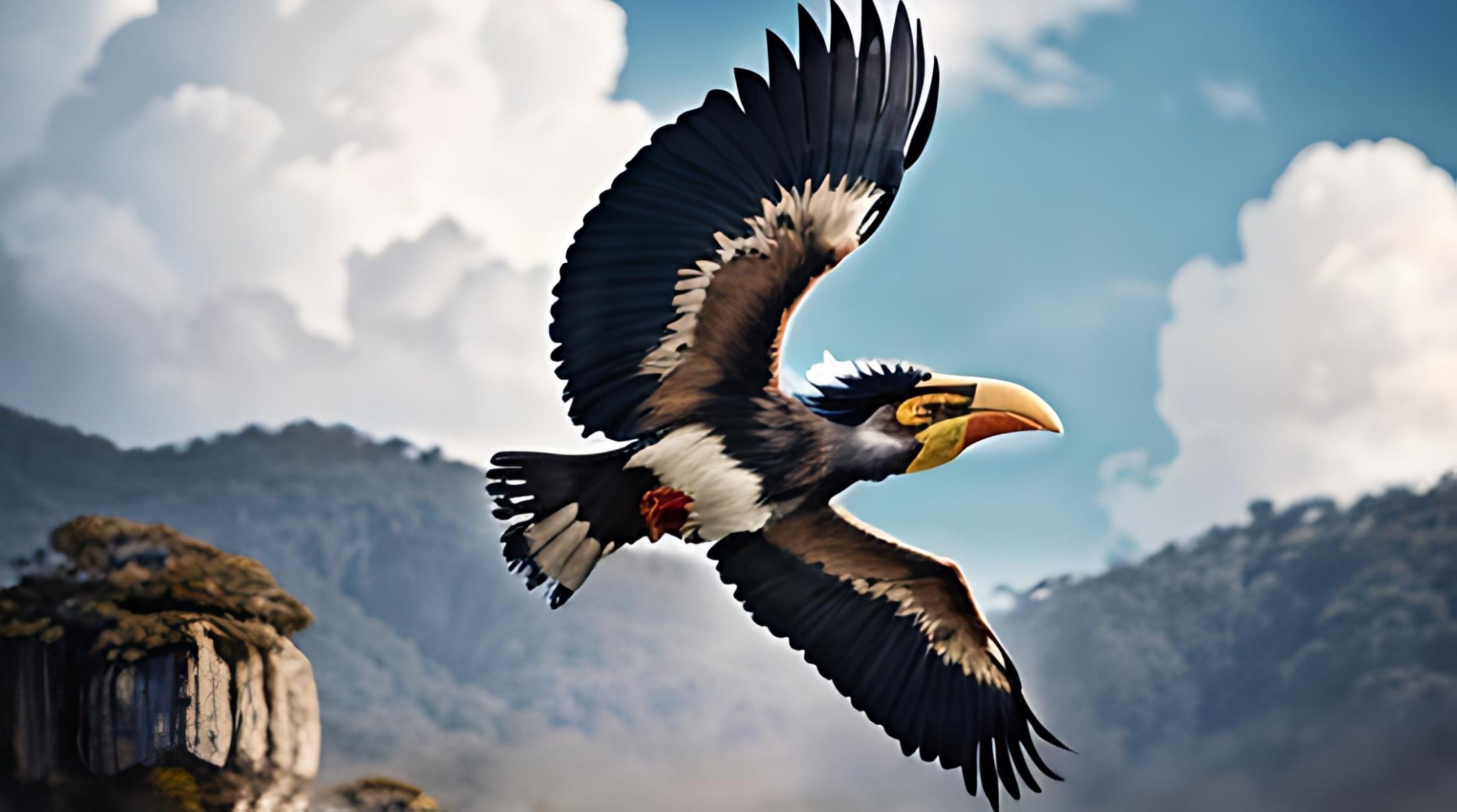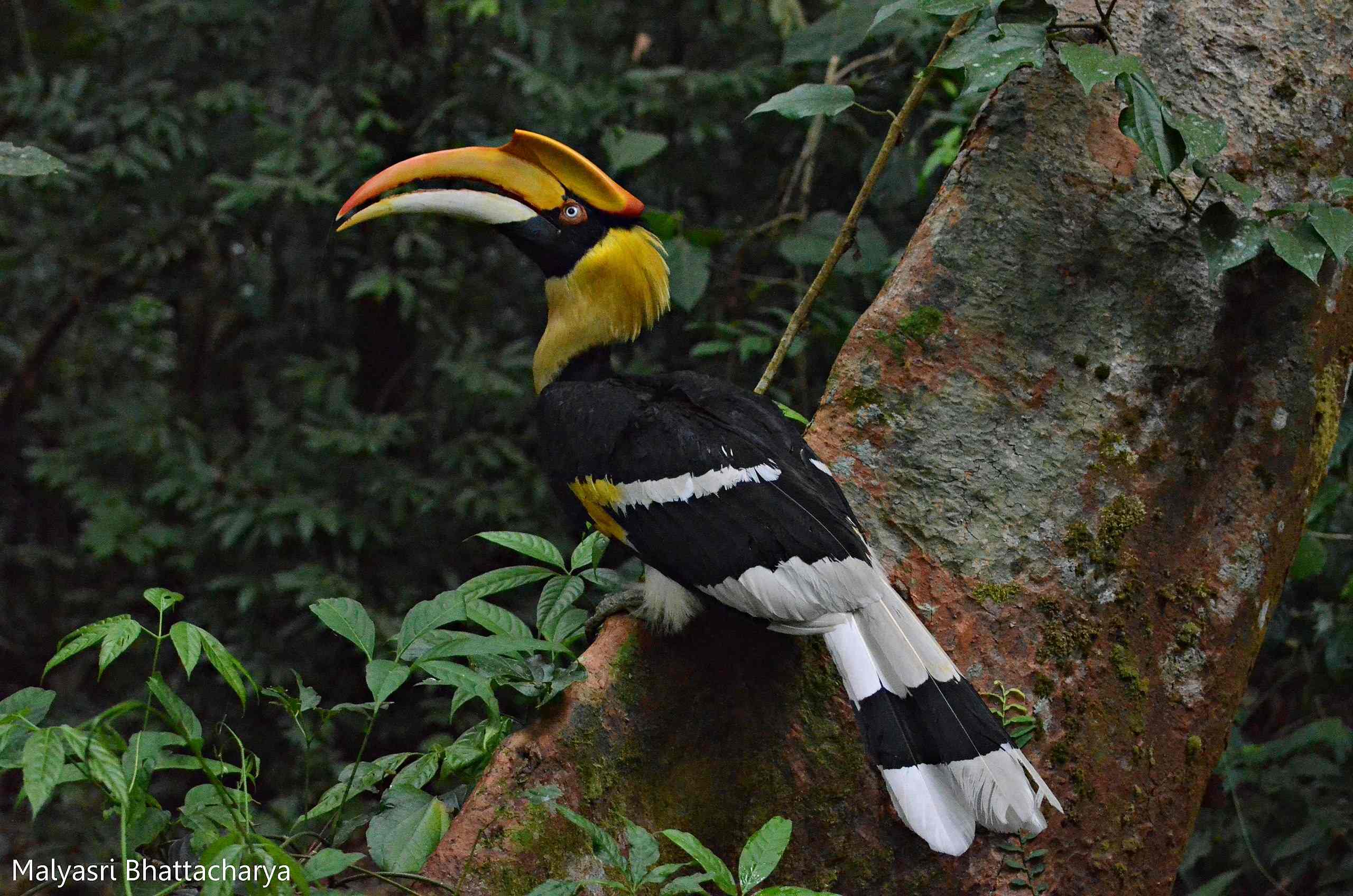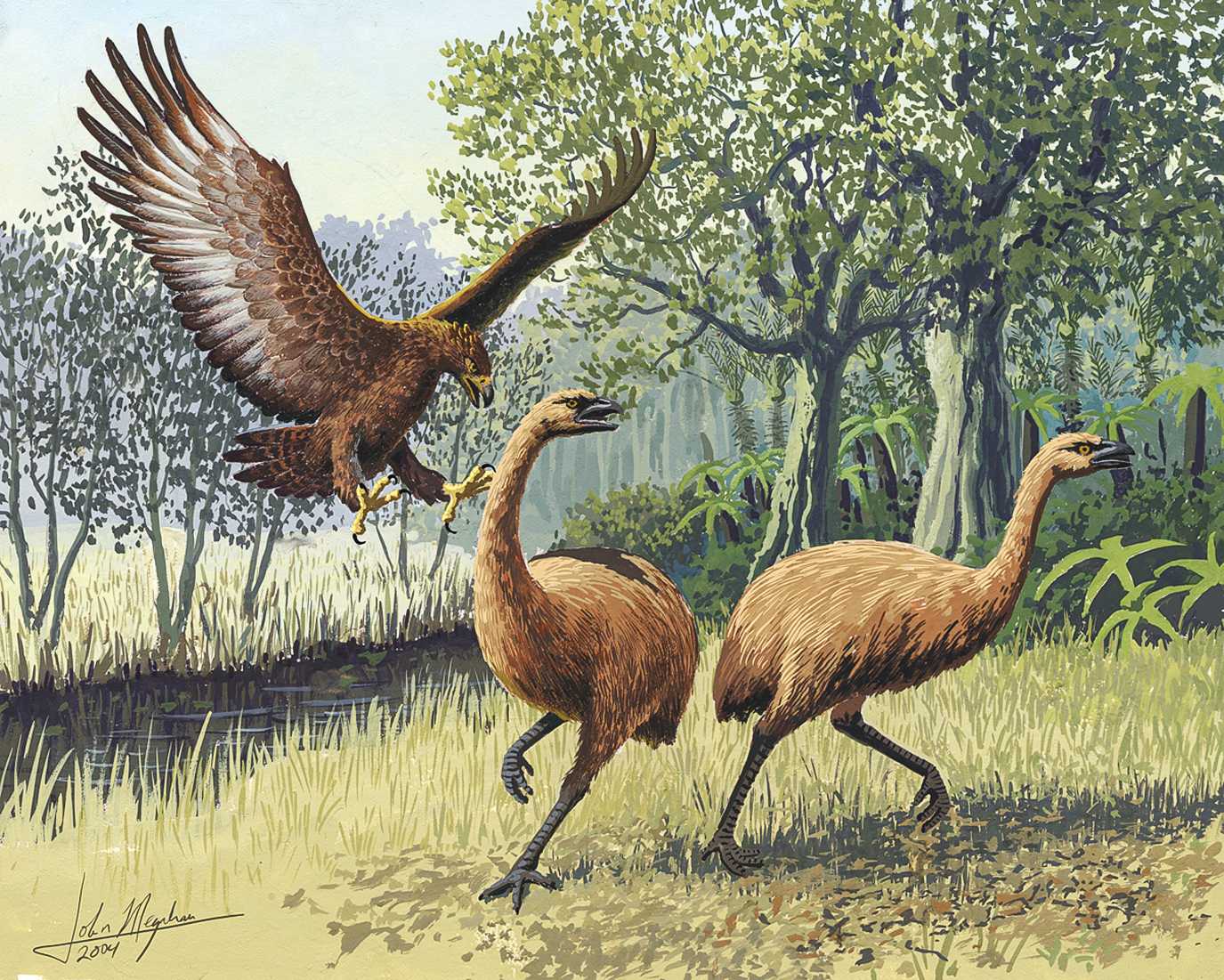The remote and enchanting region of the Torres Strait, nestled between New Guinea and Queensland, Australia, has long been shrouded in folklore and legends. Among the intriguing tales that have allured locals and adventurers alike is the enigma of the giant hornbill known as the Kusa Kap. Said to possess an awe-inspiring wingspan of up to 22 feet, this cryptid creature has both fascinated and bewildered those who have encountered it. So, what is the truth behind the legend of the giant hornbill of New Guinea?

The origins of the Kusa Kap legend
The first documented mention of the Kusa Kap can be traced back to the 18th-century naturalist Luigi d’Albertis, which is mentioned by Karl Shuker in his 2003 book “The Beasts That Hide From Men” on page 168. In his explorations of the Torres Strait, d’Albertis encountered locals who spoke of a colossal hornbill inhabiting the region.
According to their descriptions, this magnificent bird boasted a wingspan of 16 to 22 feet that far surpassed any known species of hornbill, including the great Indian hornbill and the rhinoceros hornbill. The giant bird’s alleged ability to carry dugongs in its formidable claws further added to its mystique. The natives claimed that the sound of its wings in flight resembled the thunderous roar of a steam engine, amplifying the aura of wonder surrounding this extraordinary creature. In their legends, the natives call it “Kusa Kap”.
An encounter of the giant hornbill or Kusa Kap was cited in Nature, (Nov. 25, 1875), V. 13, p. 76:
An interesting letter appears in yesterday’s Daily News from Mr. Smithurst, the engineer of the steamer which made the voyage up the newly discovered Baxter River in New Guinea, referred to in Sir Henry Rawlinson’s address at the Geographical Society last week. The river seems to be a magnificent one, and could evidently be made navigatable to a considerable distance inland. The exploring party found the banks to consist mainly of mangrove swamps, though, near the end of the journey, high clay banks with Eucalyptus globulus were found. Scarcely any natives were seen, though there were frequent signs of their being about. Mr. Smithurst refers to a very remarkable bird, which, so far as we know, has not hitherto been described. The natives state that it can fly away with a dugong, a kangaroo, or a large turtle. Mr. Smithurst states he saw and shot at a specimen of this wonderful animal, and that “the noise caused by the flapping of its wings resembled the sound of a locomotive pulling a long train very slowly.” He states that “it appeared to be about sixteen or eighteen feet across the wings as it flew, the body dark brown, the breast white, neck long, and beak long and straight.” In the stiff clay of the river bank Mr. Smithurst states that he saw the footprints of some large animal, which he “took to be a buffalo or wild ox,” but he saw no traces of the animal. These statements are very wonderful, and before giving credence to them we had better await the publication of the official account of the voyage. A very fair collection of rocks, stones, birds, insects, plants, moss, and orchids has been made, which will be submitted to a naturalist for his opinion. The dates of Mr. Smithurst’s communication are from August 30 to Sept. 7. —Nature, (Nov. 25, 1875), V. 13, p. 76.
The cryptid giant hornbill: Fact or fiction?

While the accounts of the Kusa Kap may seem fantastical, they have sparked debates among researchers and enthusiasts. Some argue that the sightings of the giant hornbill may be misinterpretations or exaggerations, as estimating the size of unfamiliar species can be challenging. Park rangers, for instance, have noted that witnesses often overestimate the dimensions of unfamiliar creatures. This discrepancy in size estimation could explain why the wingspan of the Kusa Kap reported in the original notices decreased from 22 feet to 16-18 feet when an experienced hunter attempted to shoot it.
The identity of the Kusa Kap
To shed light on the identity of the Kusa Kap, it is essential to consider other avian species that inhabit the region. One particular species that has been linked to the legend is the red-necked hornbill. This large bird, known for its distinctive call during flight, has been observed engaging in dugong-snatching activities. The red-necked hornbill’s behaviors, combined with its physical attributes, have led some researchers, including A.C. Haddon, to speculate that it may be the inspiration behind the Kusa Kap legend. However, further investigation and analysis are required to confirm this hypothesis.
The tale of Kaudab and Bakar
Deep within the captivating legend of the Kusa Kap lies a poignant tale of love, jealousy, and redemption. The story centers around Kaudab, a skilled dugong hunter, and his beautiful wife, Bakar. Their idyllic life takes an unexpected turn when Giz, a cunning female spirit, becomes consumed by jealousy and sets out to sabotage their happiness. Giz, a dogai with shapeshifting abilities, lures Bakar underwater and abandons her on the island of Kusar.

Isolated and alone, Bakar survives on the island by subsisting on kusa seeds. Miraculously, she becomes pregnant and gives birth to a remarkable creature—a baby eagle. Bakar names the bird Kusa Kap, after the seeds that played an integral role in his conception. With Bakar’s devoted care, Kusa Kap grows into a magnificent creature with the strength and wingspan to carry out extraordinary feats.
Kusa Kap’s heroic exploits
As Kusa Kap matures, he embarks on a series of adventures that test his mettle and bring him closer to reuniting Bakar with Kaudab. From soaring to great heights and capturing dugongs to providing essential resources for his mother’s survival, Kusa Kap’s heroic exploits showcase his loyalty and determination. Guided by an unwavering love for his family, Kusa Kap’s unwavering spirit leads him to triumph over adversity.
The role of Giz in the legend
Giz, the malevolent dogai who enacts her revenge on Kaudab and Bakar, adds an intriguing layer to the legend of the Kusa Kap. Her jealousy and desire for Kaudab drive her to extreme measures, resulting in the separation of the couple. However, Kusa Kap’s ultimate act of justice and retribution brings an end to Giz’s reign of terror. By capturing her and releasing her far from Dauan, Kusa Kap ensures that Giz meets her demise, transforming into Dogail Malu, the dogai sea.
Kusa Kap’s connection with New Guinea
While the Kusa Kap legend primarily revolves around the Torres Strait region, there are intriguing parallels to be found in New Guinea. As Luigi d’Albertis recounts the tale of this gigantic bird, residing near the Mai Kusa river. The similarities to the Kusa Kap legend are undeniable, pointing to a potential connection between the two. Further exploration of these narratives could provide valuable insights into the origins and nature of these majestic avian creatures.
The fascination with “living pterosaurs”
The allure of the Kusa Kap legend is further heightened by its association with living pterosaurs. In some accounts and depictions, the Kusa Kap is portrayed as a bird with feathered wings and a feathered tail, reminiscent of the pterosaurs of ancient times. This connection between the Kusa Kap and pterosaurs fuels the imagination and fuels the ongoing fascination with these mythical creatures.
Final thoughts
The mystery of the giant hornbill of New Guinea, known as the Kusa Kap, continues to enthral and intrigue people all around the globe. From its extraordinary size and alleged ability to carry dugongs to its connection to ancient legends and lore, the Kusa Kap stands as a testament to the enigmatic wonders that inhabit our world. While the truth behind the legend may remain elusive, the tales and accounts surrounding the Kusa Kap remind us of the enduring power of folklore and the enduring allure of the unknown.
After reading about the mysterious legend of Kusa Kap, read about Kongamato — a living pterosaur in Congo?




